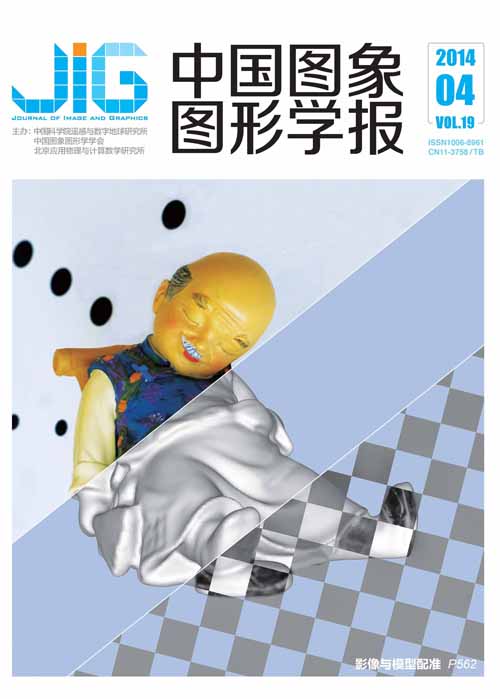
l1优化在网格去噪中的应用
王鹏1, 王胜法2,3, 曹俊杰1, 李楠楠1, 李波4, 苏志勋1(1.大连理工大学数学科学学院, 大连 116024;2.大连理工大学软件学院, 大连 116024;3.大连理工大学计算机科学与技术学院, 大连 116024;4.南昌航空大学数学与信息科学学院, 南昌 330063) 摘 要
目的 网格去噪是计算机图形学中的经典问题,而如何在去除噪声的同时保持网格的特征结构是这一研究方向所面临的最大挑战。方法 提出一种具有稀疏性的全局网格去噪方法,该方法源于信号处理理论中稀疏表示的基本思想,通过优化全局能量函数来去除网格模型的噪声,同时能够保持网格模型的特征结构。该方法共分为两个步骤,第1步为网格面法向量的滤波,首先建立全局优化模型,对噪声网格的面法向量进行滤波优化,其中引入l1范数来保证解的稀疏性,使得优化后新的面法向量能够保持网格的特征结构;第2步为网格曲面的重建,根据第1步得到的新的面法向量,按照面法向量的定义,建立最小二乘意义下的网格顶点的重建模型,求解得到新的网格曲面。结果 由于该模型是全局方法,避免了现有滤波方法可能出现的不收敛等问题,能够取得比较满意的去噪效果。结论 大量实验结果表明,本文方法在去除噪声的同时,能较好地保持网格的特征结构,尤其对于CAD模型有很好的实验效果。
关键词
The application of l1-optimization in mesh denoising
Wang Peng1, Wang Shengfa2,3, Cao Junjie1, Li Nannan1, Li Bo4, Su Zhixun1(1.School of Mathematical Science, Dalian University of Technology, Dalian 116024, China;2.School of Software Technology, Dalian University of Technology, Dalian 116024, China;3.School of Computer Science and Technology, Dalian University of Technology, Dalian 116024, China;4.School of Mathematics and Information Science, Nanchang Hangkong University 330063, China) Abstract
Objective Mesh denoising is a typical problem in computer graphics. The key challenge we face in this field is to denoise the mesh and maintain the structure of the mesh at the same time. And it is becoming the hottest topic in this area. Method We propose a global mesh denoising method using l1-sparsity. This method is motivated by the fundamental theory of sparse representation in the field of signal processing. The global optimization of an energy function is used to remove noises from the mesh while the features are preserved. There are two steps in our method. The first step is the filtering of the face normals. We formulate a global optimization model to optimize the face normals of the noised mesh. Then we use the l1-norm to ensure the sparsity of the solution, which preserves the structures of mesh features. The second step is the reconstruction of the denoised mesh. Given the new filtered face normals, we create a vertex reconstruction model under the least-square sense according to the definition of the face normal. The denoised mesh is updated by the solution of the reconstruction model. Result Furthermore, our model solves the denoising problem globally, which avoids problems of existing methods, such as the convergence problem. Conclusion A large number of experiments demonstrate that our method is able to remove noises, at the same time, preserving the features of the mesh, especially for the CAD models.
Keywords
|



 中国图象图形学报 │ 京ICP备05080539号-4 │ 本系统由
中国图象图形学报 │ 京ICP备05080539号-4 │ 本系统由